NGDC Deposited Data
Type of resources
Available actions
Topics
Keywords
Contact for the resource
Provided by
Years
Formats
Representation types
Update frequencies
Service types
Scale
Resolution
-

2 papers and supplementary information produced from NERC Grant NE/I006427/1. Lear, C. H., H. K. Coxall, G. L. Foster, D. J. Lunt, E. M. Mawbey, Y. Rosenthal, S. M. Sosdian, E. Thomas, and P. A. Wilson (2015), Neogene ice volume and ocean temperatures: Insights from infaunal foraminiferal Mg/Ca paleothermometry, Paleoceanography, 30, 1437–1454, doi:10.1002/2015PA002833. Elaine M. Mawbey, Caroline H. Lear; Carbon cycle feedbacks during the Oligocene-Miocene transient glaciation. Geology ; 41 (9): 963–966. doi: https://doi.org/10.1130/G34422.1
-
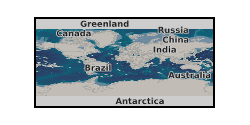
Description of peatland sites included in the compilation of carbon accumulation rates, including resolution (high, low), interpolation (yes/no), contributor name, country, lon, lat, peatland type, dominant plant type, no. of dates used in the last millenium carbon accumulation rate calculation, and problems with the data. Peatland sites at northern hemisphere high and mid latitudes (260), tropical (30) and southern hemisphere high latitudes (7 sites).
-

Geochemical data: %C, %OC, %IC, %N Physical Property data: Wet and dry bulk density, water content, porosity. Sediment cores extracted from Offshore Region: Loch Sunart NM 70277 63360, 56.705259, -5.7545471. For more information see published report, Substantial stores of sedimentary carbon held in mid-latitude fjords. / Smeaton, Craig; Austin, William; Davies, Althea; Baltzar, A.; Abell, R. E.; Howe, J. A. doi:10.5194/bg-13-5771-2016
-
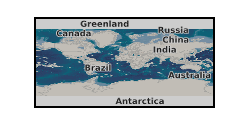
Rotating Rayleigh-Benard convection. Table of the input and output parameters of the simulations. Snapshot of the temperature field, three components of the velocity and three components of the magnetic field in 3D. Data generated with a magnetohydrodynamical code of rotating Boussinesq convection in planar geometry (Cattaneo et al. 2003 ApJ 588 1183-1198). Data published in Guervilly, Hughes & Jones 2014 JFM 758 407-435 (DOI:10.1017/jfm.2014.542) and Guervilly, Hughes & Jones 2015 PRE 91 041001 (DOI: 10.1103/PhysRevE.91.041001)
-
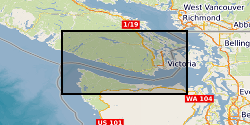
Detections of tremor at a set of template locations over the course of four slow slip events in 2004, 2008, 2009, and 2010. As well as identified bursts of tremor within these windows. The dataset consists of: Detected spikes in the tremor time series Each file contains a list of identified spikes in the inter-component coherence time series. LFE (Low frequency earthquakes) locations The locations of LFEs identified by Bostock, M. G., Royer, A. A., Hearn, E. H., and Peacock, S. M. (2012), Low frequency earthquakes below southern Vancouver Island, Geochem. Geophys. Geosyst., 13, Q11007, doi:10.1029/2012GC004391. Cp values through time 12 files containing time series of inter-component and/or inter-station coherence at a range of LFE locations Further descriptions are available in the README and in the preprint hosted on EarthArxiv: Gombert and Hawthorne, Rapid tremor migration during few minute-long slow earthquakes in Cascadia, 2022, doi: 10.31223/X56623.
-
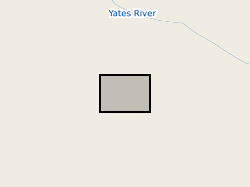
This dataset contains a catalogue of in-situ models for a fault activated by hydraulic fracturing in the Horn River Basin in July 2011. These were created as a part of Kettlety et al. (2019), wherein a Monte Carlo analysis was used to assess fault stability. See attached readme file for more details.
-
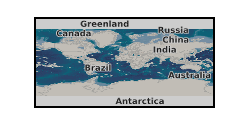
The data set contains two separate items: (1) Global carbon dioxide removal potential of mine tailings, which includes (a) List of selected silicate-hosted mine tailings (classified by their targeted commodity and typical host rock) for initial assessment of CO2 removal (CDR) potential; (b) Estimated annual and cumulative production (Mt) of suitable tailings for host countries for the years 2030-2100; (c) Assessed deposit types and associated tailings mineralogies; (d) Summary kinetic data for typical targetable minerals in suitable tailings; (e) Effects of mineral compositional (and end member) variations on dissolution rates under unimproved conditions (Wr-Neut); (f) All compiled mineral data used in the GGREW global assessment study and other complimentary GGREW studies; (g) Estimates of dissolution extent over time (on decadal timescales of up to 70 years) for a theoretical 1 kg of tailings material at typical grain sizes and unimproved conditions (using Wr-Neut); (h) Total cumulative CDR (tCDR; MtCO2 as alkalinity); (i) Estimated CDR capacity (cumulative for the estimated annual tailings production at 2030 (sCDR) and total cumulative CDR (tCDR) as alkalinity for 2050 and 2100) for select countries that produce and host suitable tailings; (j) CDR achieved annually by country (2030-2100), under unimproved and improved conditions; and (k) Sources of information for modal mineralogies, commodity production to tailings production ratios and typical grain sizes for each potentially suitable tailings material type. (2) Results of enhanced weathering reactor optimisation with two objectives, namely energy consumption and space (area) requirement, which include the optimisation output for calcite weathering using trickle-bed reactor, calcite weathering using packed-bubble column and forsterite weathering using packed-bubble column. For each of them, the data includes key reactor design parameters, the two objectives, and key process characteristics (particularly, mass transfer performance and mineral dissolution rates).
-

Each of this set of 3D X-ray tomography datasets show a particle “bead pack” developed as a magmatic mush analogues but of use to anyone investigating non-spherical systems. The stack of tiff images in each 3D dataset show either cuboid, rod and disc/plate like particles as well as irregular shapes and mixtures of these. The data were used to measure packing geometries, contact areas, and pore volumes, surface areas and connectivity, and perform permeability simulation used to develop advanced porosity-permeability relationships for any bead packing geometry. The data were collected on a Nikon XCT scanner with the exact imaging condition for each scan presented in the txt settings file in each folder (including x-ray energy, flux and resolution information). The data may be of use to those developing advanced finite element, discrete element or flow models in complex packed beds.
-

Radiocarbon measurements on planktic and benthic foraminifera from sediment cores in the North Atlantic: Ocean Drilling Program (ODP) 983, SU90-44, MD04-2829, MD01-2461, and EW9302-2JPC Site 983 is located on the Bjorn Drift in approximately 1650 m water depth on the eastern flank of the Reykjanes Ridge. Hole 983A Position: 60°24.200'N, 23°38.437'W. Sediment core SU90-44 collected from the north-eastern Atlantic basin, near the top of a small abyssal hill, southeast of the Rockall plateau, 50°01'N, 17°06'W, 4279 m. Sediment core MD04-2829 collected from Rosemary Bank in the Northern Rockall Trough 58º 56.93’ N; 09º 34.30’ W; 1743 m water depth. Sediment core MD01-2461 was collected from the north-western flank of the Porcupine Seabight approximately 550 km to the southwest, 51°45’N, 12°55’W; 1153 m water depth, recovered in 2001. Core EW9302-2JPC recovered from the Rockall Plateau and East Flank of Reykjanes Ridge from the Flemish Cap in the south- eastern Labrador Sea, 48°47.70′N, 45°05.09′W, taken at water depth 1251m.
-
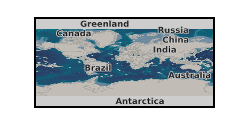
Concentrations of gaseous and aqueous fixed nitrogen products and isotopic measurements of aqueous nitrite and nitrate in spark discharge experiments. Spark experiments were conducted at the University of St Andrews in the St Andrews Isotope Geochemistry Lab (StAIG) between November 2020 and February 2022. Analysis of gaseous products was carried out with a quadrupole mass spectrometer (Hiden Analytical ExQ Quantitative Gas Analyser) in St Andrews. Measurement of concentrations of aqueous nitrite and nitrate and their isotopic composition were carried out for one part of the samples in St Andrews and for the other part at Brown University, Rhode Island, USA. The data was collected to investigate the efficiency of nitrogen fixation by lightning in different gas compositions, resembling the atmospheres of modern and early Earth. The isotope data was used to determine the role of lightning in the delivery of nutrients to the earliest ecosystems on Earth by comparing our results to measurements of sedimentary rock samples from the Archean. The experimental set up was built by Patrick Barth and Eva E. Stüeken, the experiments were conducted by Patrick Barth, Lukas Rossmanith, and Yuqian Peng, the analysis conducted by Patrick Barth, Lukas Rossmanith, Yuqian Peng, and Wendell Walters with support from Mark Claire, and the data was analysed by Patrick Barth, Eva E. Stüeken, Christiane Helling, and Wendell Walters. This dataset includes all data that is reliable and was used in the accompanying publication.
 NERC Data Catalogue Service
NERC Data Catalogue Service